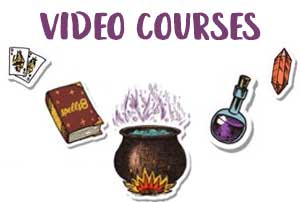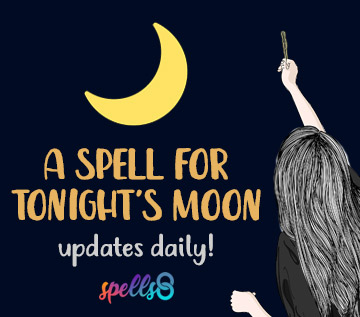Enchanting the imaginations of both the young and young-at-heart since the dawn of humankind, our fascination with the enigmatic winged creatures known as fairies is no laughing matter.
Yet “fairy tales,” as they are affectionately called, are more than just fantastical stories confined to the pages of children’s books. These stories evolved from myths and legends passed down from one generation to another. Stories like these are not mere tales of whimsy. They have shaped family traditions, spiritual practices, and deep-seated superstitions.

The Realm of The Fae
Fae creatures are believed to be not from this realm, but rather visitors from an Ethereal plane. What we know of these beings comes from different tales in Celtic and English folklore. Although they each give different names, they all seem to describe a Fairyland or Otherworld in which these creatures reside.
In Irish folklore, the Fae are also known as the Good Neighbors or the Sí (shee). These beings are neutral toward the human realm – some have good intentions, some have bad intentions, and others have no intentions at all. They reside in the Sídhe of Ireland, fairy mounds with entrances to the otherworldly realms. The world they reside in is a different realm parallel to ours called An Saol Eile.

Scottish folklore also has fairy beings often called Seelie and Unseelie. In folklore, we only see the term “Seelie” used for the fairies. It wasn’t until later – sometime in the 1800s – that the word “Unseelie” came into use as well. Popular culture would put these two “Fairy Courts” at odds with each other: Seelie are the “good” fairies while Unseelie are the “bad” fairies. However, this isn’t folklorically accurate. Instead, the word “Seelie” was used as an honorific – a way to acknowledge the Scottish Fae without directly drawing their attention and inadvertently offending them.
English folklore has fairies, as well. One of the most well-known types of fairy from English folklore is the Brownie. This being is seen as a fairy or hobgoblin that inhabits a house or barn. They’re hard-working creatures who could often be heard in the middle of the night cleaning and doing housework. If you made them clothing, they would put them on and disappear. They are also easily offended, especially if their work isn’t being appreciated!

Though there are many types of fairies in folklore, one thing is for certain: these creatures have inhabited the hearts and minds of people all over the world for hundreds of years!
Signs of The Fae
Practitioners who work with the Fae often report the following incidents as signs of their presence. This is not a comprehensive list, either. All Fae creatures have their own personality and may interact somewhat differently.
1. Misplaced Belongings
Not all lost sets of keys or commonly misplaced items can be attributed to fairies. However, if you know you’ve been putting things away in their proper homes and yet they still seem to turn up missing, then you might be experiencing visits from the Fae. This is especially true for shiny objects like coins, jewelry, and other trinkets.

2. Duplicated Findings
Another quizzical sign of the Fae is that you may find that your missing items are returned! But in a strange twist of events, when you try to place the item in its proper home, it’s already there. As it turns out, you’ve discovered an exact duplicate of the item despite never having bought a replacement. No one knows why this phenomenon occurs. Perhaps the Fae have returned a version from their plane in their haste to return that which was borrowed.
3. Completed Chores
If you awaken to find that a few loose ends have been inexplicably tied up for you, there’s no need to worry. Much like the famous story of The Elves and The Shoemaker, some members of the Fae like to help out around the house! Commonly known as Brownies in Scottish and English lore, these spirits take a liking to those who keep their houses tidy. They may occasionally pick up the slack if they notice you’re feeling overwhelmed, too.
See also: Gods & Goddesses of the Home: Protective Spirits of the Hearth
4. Fairy Rings
It is said that fairies dance in circles after the sun sets. In their wake, they leave behind fairy rings. These are mysterious circles formed by mushrooms or wildflowers. While fairy rings are incredibly beautiful and mesmerizing, it’s important to remember two things: never to step into one and never to pick a flower or mushroom from one. Doing say can cause you to be carried off to the Fairy realm!

5. Blooming Flowers
In addition to fairy rings, you may see flowers and mushrooms popping up in the strangest of places, even leading up to your doorstep. This is often a sign that fairies have been traveling around, leaving wildlife in their wake with each step.
6. Strange Pets
Do you ever catch your furry friends acting strangely? Pets may be keener on the presence of the Fae, so you may catch them watching something that isn’t there, playing with an invisible friend, or acting excited or afraid when fairies are nearby.
Print it: Signs of the Fae
📄 This PDF version comes with a transparent background so you can print it on printer-friendly parchment paper and add it to your own Book of Shadows. Find more printable grimoire pages here.
7. Spoiling Food
When fairies are near, don’t be surprised if your food goes bad quicker than usual. The Fair Folk may have enjoyed a few bites for themselves. What you’re seeing is what’s left of the food after they absorb its nutrients from their plane.

8. Fleeting Movement
Perhaps the most obvious sign of the Fair Folk’s presence is slight movements you can barely see. You may catch glances of them skittering quickly from one room to the next from the corner of your eye, but when you try to look or follow their path – they’re gone!
What do fairies look like?
Well, the answer is more complex than you may think. There are a multitude of creatures that are types of fae, and each one presents itself differently.
“Traditional” fairies, as we often picture them, are lovely little winged creatures like those featured in Cicely M. Barker’s Flower Fairies illustrations. However, these are rarely the creatures that we interact with when we make contact with the Fae.

For the most part, fairies and fae creatures choose when and where they can be seen. If they don’t want you to see them, then you won’t. When they do appear to humans, they may appear as small spheres of light, bubbles, sparks, or shadows reaching in from dark corners.
Other common Fae creatures, from the impish goblin to the household brownie, are described as hideous beings that you might want to chase with a broom if you saw one at your doorstep. Perhaps fairies are best left to the imagination.
How to See Fairies
While many practitioners claim to work with the Fae, few claim to have encountered them firsthand. This may be because they operate on different planes than ours. If you believe you have to travel to dense, ancient forests to meet with the Fae, then you’d be surprised! Fairies are spotted not only in the moors and mounds of lore, but also in homes, shops, and bustling city streets.
Here are a few tips on increasing your chance of encountering the Fae:
- Catch their movement out of the corner of your eye.
- Leave offerings for the Fae, such as candy, sweet cakes, wine, honey, jewelry, or coins.
- Meditate and spend time in nature. Opening yourself up to an encounter is the first step.
- Project yourself to the Ethereal plane with astral projection.
- Work with the Fae as part of your spiritual practice.
- Learn about the different types of Fae and study local mythology.
- Open up your third eye. Learn to fine-tune your psychic abilities to increase your sensitivity to the presence of otherworldly beings.
When you think of fairies, what picture do you conjure up in your head? Are they the winged nymphs of Disney’s Fantasia or something truer to folklore? Have you ever had an experience with the Fae? Let us know in the comments!
Ready for more Fairies?
Whether you’re just looking to learn or you want to experience everything fairy, we have plenty more to read here at Spells8!
Folklore Fairy Queen: Goddesses and the Fairy Queen Archetype
When it comes to fairies, one of the most profound figures is the Fairy Queen. Numerous stories and myths have featured powerful queens ruling over their fairy courts from ancient times through the modern day.
Green Light Spiritual Meaning: Orbs and Other Apparitions
Have you ever awakened to see a green light shining in your room? Or just outside your window? What about walking in the woods at night?
Áine, the Goddess of Fairies: Symbols and Mythology
Áine is a solar goddess in Celtic mythology and is considered the Irish Queen of the Fairies. As a deity, she is the daughter of Egobail, one of the Tuatha Dé Danann, a supernatural race of Irish beings. She is a goddess of fertility, protection, healing, Magic, luck, the earth, and the moon.











One time I was going out for a late night run on the track. There was plenty of lightning outside but it hadn’t yet rain. As I began to run across the track, I notice a glimmering, sparkling light, prancing by along the track into the grass… what I known to have been a fae only took a moment pause before it disappeared. It was such an enchanting moment for me. I continued to run n may have been out for 2hours or so. Once I went home, it began to rain. That night was so magickal, a night that marked the beginning of me starting to get back in the groove of working out after having neglect that notion for so long.
Once I saw a green bright light out my window.